Chives (Allium schoenoprasum) with its subtle green feathers, is the smallest kind of edible onion. Chives is a perennial plant growing up to 50 cm, as its homeland considered as Asia and Europe, and North America. In fact, chives is the only representative of the genus Allium, which originates from both the Old and the New World.
Chives is popular culture, used mainly as a spice in various dishes. Can be found easily in stores and markets and grows easily in pots or in the garden. Chives is a perennial bulbous plant that has been known since antiquity.
It has a delicious onion flavor with unobtrusive dense tufts of slender leaves and flowering stems with beautiful delicate purple petals. Chives develops and grows continuously until late autumn. Reachs height between 30-50 cm with cylindrical dark green leaves with a specific flavor of onions. It has a 2-3 mm diameter leaf, while onions are conical, 2-3 cm long and 1 cm wide. They grow in groups of thick roots.
Pale purple flowers of chives are star-shaped with six petals, with a width of 1-2 cm and grow in dense clusters from 10 to 30 together. Prior to dissolving and flourishing, inflorescence is wrapped in paper. Seeds of chives form a small pouch with 3 partitions and ripen in summer.
While its leaves are mainly used in cooking to prepare salads, soups and decorations, the colors in the flower are also beautiful and pleasant flavor, which makes them very suitable for decoration in the garden or in pots on windowsills.
Chives, unlike cultural onion, do not form a typical bulb, as its focus is on delicate, thin green leaves.
In the culinary traditions of France and Sweden, chives are deeply embedded. Data found in its use of a cook book in 1806, where the author describes in detail its consumption with pancakes, soups, fish and sandwiches.
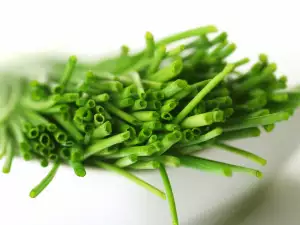
Growing chives
You can grow it yourself at home, and for that purpose cut spring onion and chives in January and plant in a pot. Chives are not a capricious plant and its cultivation is easy. Propagate with seeds, or by dividing older clumps as mentioned. In the first year from seed grows you will see a plant with a few leaves.
The second year it starts branches and each branch of the new forms its own, resulting in a dense clump, with a common bottom. The leaves of chives grow in early spring and are closely spaced, ending with a light purple globular cluster. The culture can stay up to 2-3 years in one place, and the growing season is up to several harvests. Gradually, it then begins to decline.
They do not flourish with regular cutting of leafy feathers. The most appropriate is to grow it in a pot or a box on the balcony, because it loves sunny places. Its soil should be well drained and it should be watered regularly to develop the nice and succulent leaves that are so prized in the culinary mastery of the world. Chives rarely suffers from pests and diseases and more - its unique and special flavor is even able to banish unpleasant insects in your garden.
Composition of chives
Chives is a pretty good source of some vitamins such as C and A. The delicate feathers contain traces of sulfur and are also rich in iron and calcium. It has high potassium levels and greater doses of vitamin K and others. Its taste is complemented by its high content of a lot more vitamins, minerals and essential oils.
In 100 g chives contain:
Calories 30
Protein 3.27 g
Carbohydrates 4.35 g
Fat 0.73 g
Calcium 92 mg
Iron 1.6 mg
Beta Carotene 2612 mcg
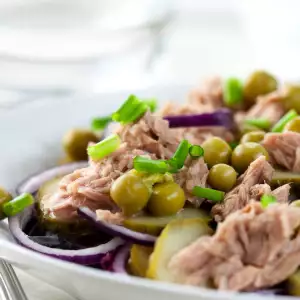
Culinary use of chives
Fragile and delicate thin sheets of chives are highly prized in cooking. With their delicate taste, which is something like green garlic and onion, the leaves have interesting applications. They easily lose flavor after being cooked or dried. The way you can fully enjoy the flavor of the chives, is if you eat them fresh as a condiment for salads and other dishes.
Chives can be added to almost any culinary specialty, prepared with other types of onions, with the difference that it is better to add it at the end of cooking. Chives are perfectly combined with dairy products, giving specific and interesting flavor sauces, milk, cheese and salads with cheese. Very suitable for flavoring egg dishes, potatoes, potato mashed or salad will delight anyone who has tried to honor your specialties.
Chives are successfully added as a spice in hot or cold soups - dried, fresh chopped or crushed. Also feel free to sprinkle crushed on various local dishes, snacks and fried cutlets other baked dishes and savory pies, sausages, croquettes, etc.
Moreover, it is perfect to decorate culinary masterpieces as widely used in the finest restaurants in the world to make a palatable or unique type of dish. Very well combined with the taste of turkey or fish. Even baked toast with butter, sprinkled with chives will delight your senses.
Chives are used in a variety of breads, oils and even to flavor vinegar. In Poland chives are served with cheese curds and a typical summer dish is Swedish herring with chives. In fact, chives is one of the most important herbs in French cuisine, along with tarragon, chervil and parsley. The symbiosis between these four fragrances in equal amounts is actually the French combination of fresh herbs Fines Herbes.
Benefits of chives
As a source of vitamins and minerals, regular presence of chives in your meals it is not unnecessary. It has healing properties similar to those of garlic, but less prominent. Maybe that’s why chives is not as popular remedy in traditional medicine. With its content of organic compounds chives have a beneficial effect on the human circulatory system. Thin green onion leaves have a slightly stimulating, diuretic and antiseptic value.
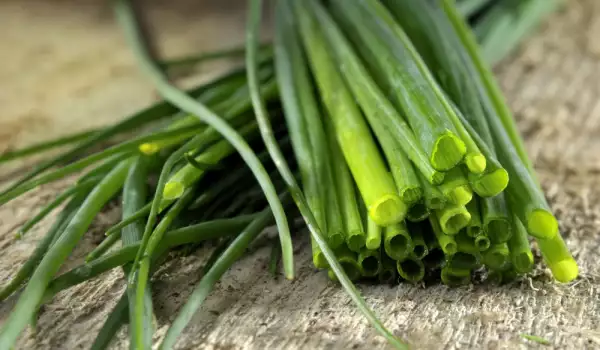
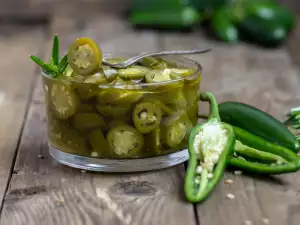
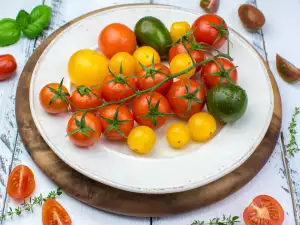
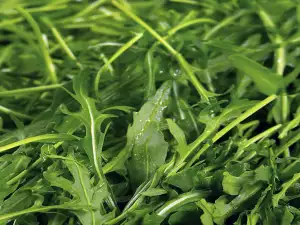
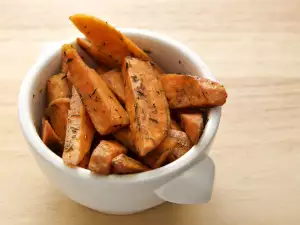
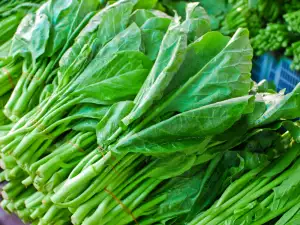
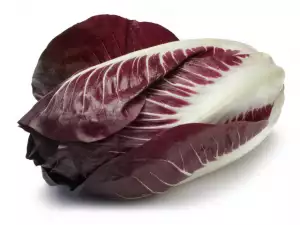
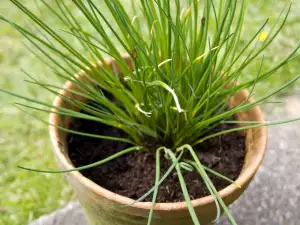

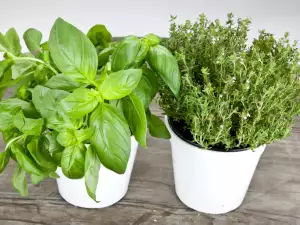

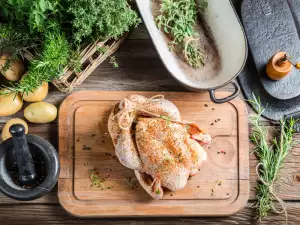
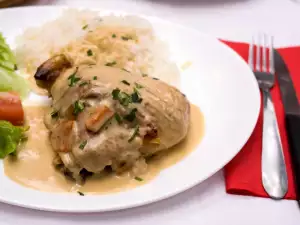
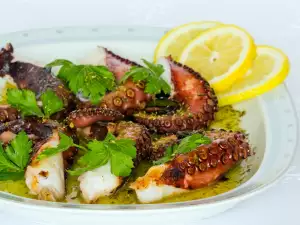
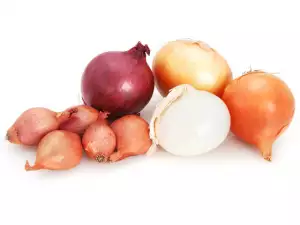




Comments